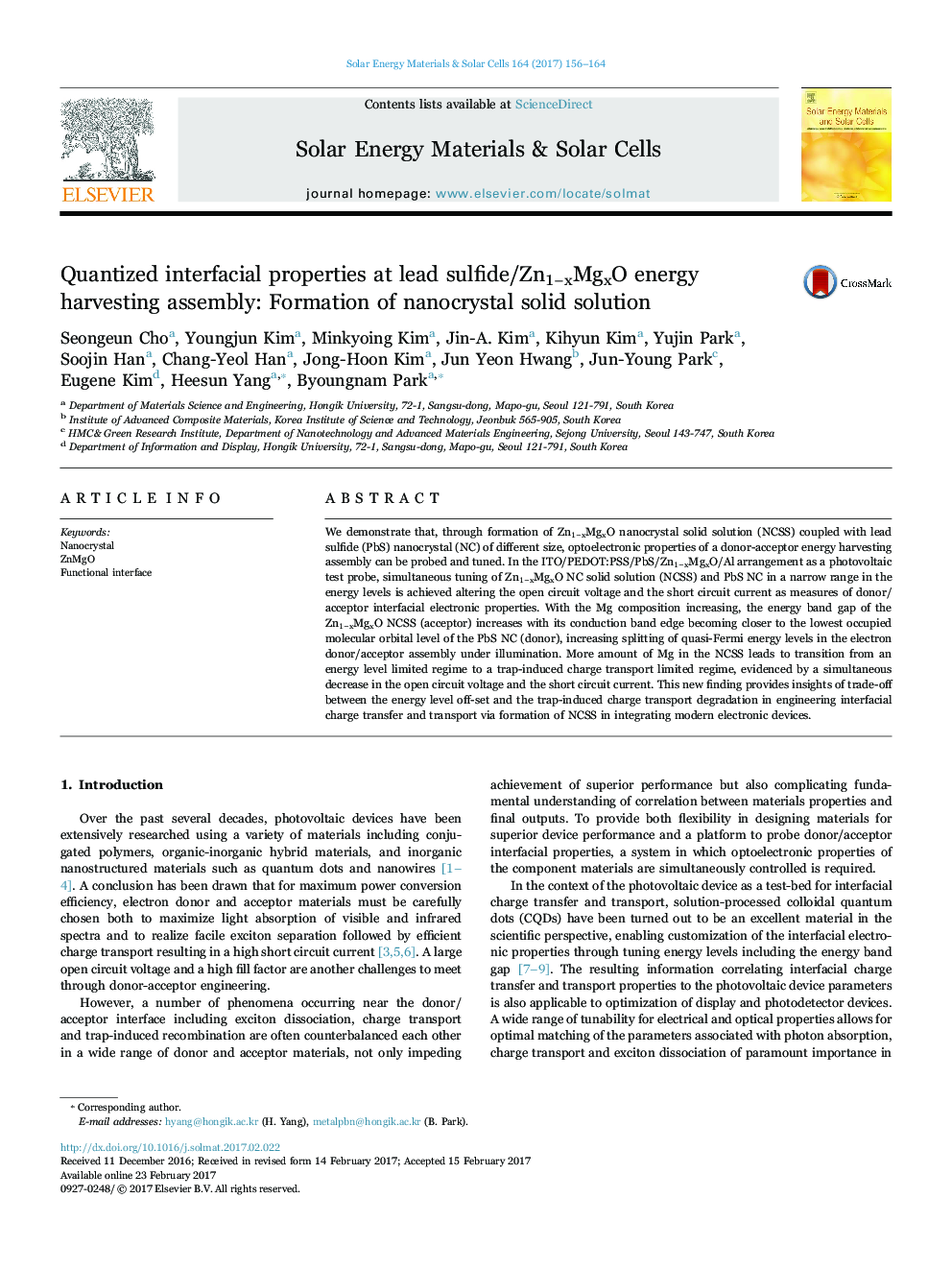| Article ID | Journal | Published Year | Pages | File Type |
|---|---|---|---|---|
| 6457122 | Solar Energy Materials and Solar Cells | 2017 | 9 Pages |
â¢Simultaneous tuning of Zn1âxMgxO NCSS and PbS NC in a narrow range is achieved.â¢Formation of NCSS at a very narrow range has a dramatic effect on the interfacial properties.â¢Subtle amount of doping in the NCSS leads to transition from an energy level limited to a transport limited regime.
We demonstrate that, through formation of Zn1âxMgxO nanocrystal solid solution (NCSS) coupled with lead sulfide (PbS) nanocrystal (NC) of different size, optoelectronic properties of a donor-acceptor energy harvesting assembly can be probed and tuned. In the ITO/PEDOT:PSS/PbS/Zn1âxMgxO/Al arrangement as a photovoltaic test probe, simultaneous tuning of Zn1âxMgxO NC solid solution (NCSS) and PbS NC in a narrow range in the energy levels is achieved altering the open circuit voltage and the short circuit current as measures of donor/acceptor interfacial electronic properties. With the Mg composition increasing, the energy band gap of the Zn1âxMgxO NCSS (acceptor) increases with its conduction band edge becoming closer to the lowest occupied molecular orbital level of the PbS NC (donor), increasing splitting of quasi-Fermi energy levels in the electron donor/acceptor assembly under illumination. More amount of Mg in the NCSS leads to transition from an energy level limited regime to a trap-induced charge transport limited regime, evidenced by a simultaneous decrease in the open circuit voltage and the short circuit current. This new finding provides insights of trade-off between the energy level off-set and the trap-induced charge transport degradation in engineering interfacial charge transfer and transport via formation of NCSS in integrating modern electronic devices.
